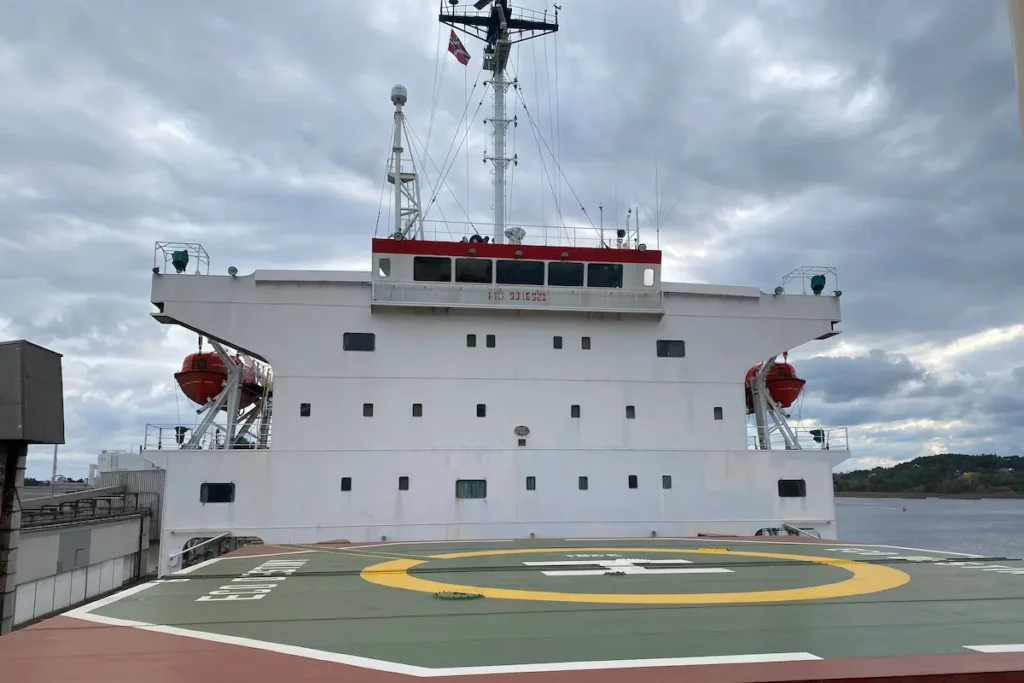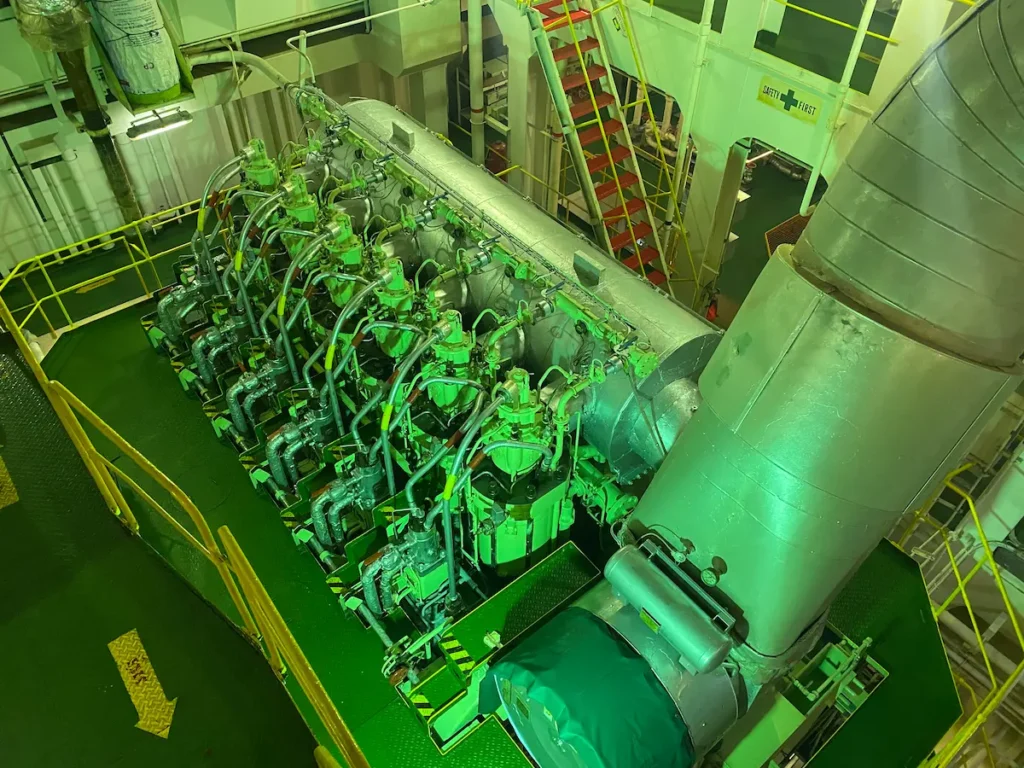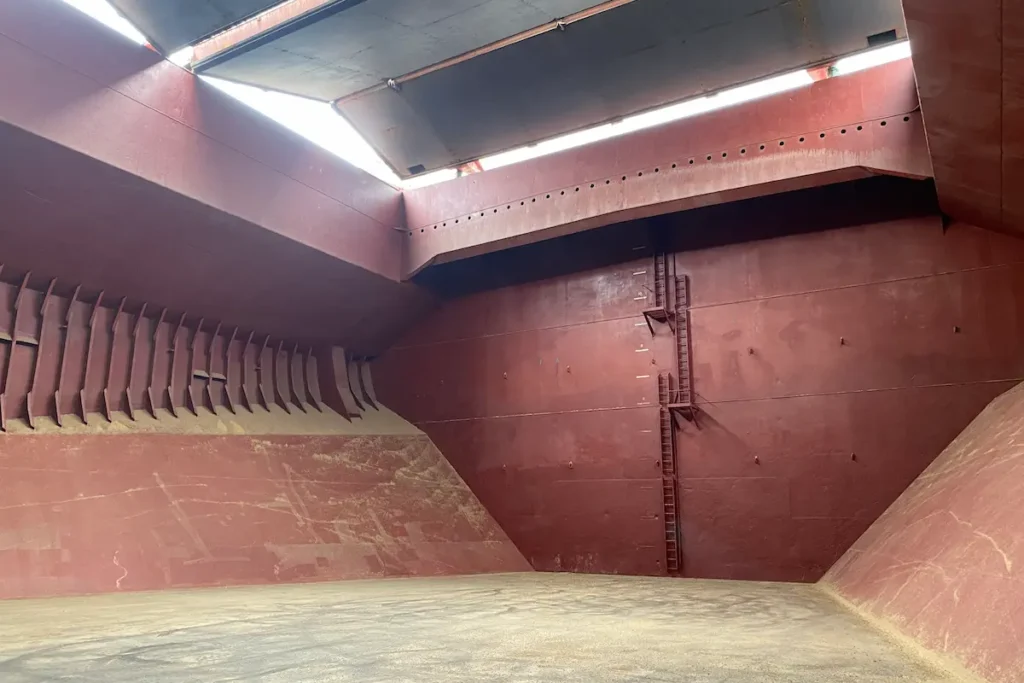Cargo ships are highly specialized vessels with distinct areas designed to ensure functionality, safety, and efficiency.
Each space plays a critical role in the operation and performance of the ship. Below is an overview of the main spaces found on cargo ships.
Accommodation Block
Modern cargo ships have a much smaller crew than earlier vessels. However, they still require accommodation for the crew. These spaces include sleeping cabins, offices, a galley, and laundry facilities. The accommodation block is usually located within the ship’s superstructure.

In addition to these facilities, the superstructure also houses the Navigational Bridge. This is the control center of the ship where the crew navigates and manages the vessel.
Machinery Spaces
Modern vessels are like ocean-going small towns and delivery vehicles combined. They must have their own power generation and electrical distribution systems. Ships also need potable water service and sewage disposal systems. These are just a few of the critical systems on board.
Ships must also have extensive propulsion, steering, and navigation equipment. The space requirements for these systems can be substantial. For example, the largest marine propulsion engines can exceed 2,000 tons and be as tall as a four-story building.

The main engine room is usually the largest machinery space on a vessel. It typically contains the propulsion system and related machinery. This space is crucial for the ship’s operation and performance.
Cargo Spaces
Cargo spaces on vessels vary based on the type of cargo they carry. They may be holds for dry cargoes or tanks for liquid cargoes. These spaces are usually large and occupy most of the hull’s volume.
Dry cargo can include bulk items like grain or mineral ore. It can also be packaged in crates, bales, or shipping containers. Liquid cargoes are stored in specialized tanks.

It’s important to note that not all ships carry cargo. Cargo spaces are not found on vessels like pure passenger ships, harbor tugs, or crane ships. These ships have different designs and functions.
Ballast Tanks
Ballast tanks are watertight compartments used to load and unload seawater. This process changes the ship’s displacement and draft. Ballasting is crucial when the ship is on a return voyage without cargo. Ballast tanks help maintain the vessel’s stability and balance.
These tanks are distributed throughout the ship. They are typically found in the bottom, sides, fore peak, and aft peak. This distribution allows the ship to be upright and trimmed, compensating for unbalanced cargo loads.
Fuel Tanks
Fuel tanks on cargo ships carry a variety of fuels, including bunker fuel and diesel. Due to the long voyages at sea, these tanks typically have a large capacity. They are essential for the ship’s operation and are integral to the hull structure.
There are different types of fuel tanks used on cargo ships, categorized by their purpose:
- Storage Tanks: These tanks store the bulk of the ship’s fuel supply. They are typically large and located in the bottom, sides, or deep parts of the ship.
- Settling Tanks: These tanks are used for separating water and impurities from the fuel before it is used. They allow sediments to settle at the bottom, ensuring cleaner fuel for the engines.
- Service Tanks: These tanks store clean, ready-to-use fuel for the ship’s engines. They supply the fuel directly to the engines and ensure a steady and reliable fuel flow.
Deck Houses
Deck houses are structures built onto the main deck of a vessel. They can vary in size and use, but are mostly used as storage spaces or workshops.
Deck houses are distinct from superstructures. While superstructures extend to the sides of the vessel, deck houses are separated from the ship’s sides.Cargo ships feature specialized spaces like accommodation blocks, ballast tanks, and machinery rooms, each optimized for functionality and safety. Learn how these key areas, including fuel and cargo spaces, contribute to the efficiency of modern vessels.
Voids
Voids are empty structural spaces on a ship, kept to a minimum but sometimes providing additional buoyancy or protection. These spaces are strategically placed within the ship’s structure. They help enhance the vessel’s overall stability and integrity.
Cofferdams are a specific type of void. They serve as double barriers when separating two spaces. For example, they can be used between oil cargo tanks and safe spaces. This separation helps prevent the spread of hazardous materials and enhances the ship’s safety.
Summary Table: Spaces and Functions
| Space | Primary Function | Key Features |
|---|---|---|
| Accommodation Block | Crew living quarters | Cabins, galley, offices, laundry |
| Ballast Tanks | Stability adjustment | Bottom, sides, fore/aft peak placement |
| Cargo Spaces | Cargo storage (dry or liquid) | Bulk holds, tanks |
| Deck Houses | Storage/workshops on the deck | Central structures |
| Fuel Tanks | Fuel storage | Integrated with the hull |
| Machinery Spaces | Operational systems (power, propulsion, etc.) | Main engine room, auxiliary systems |
| Voids | Safety and buoyancy | Cofferdams, minimal use |
By understanding these specialized areas, you gain insight into the complexity and functionality of modern cargo ships. Each space is optimized for safety, efficiency, and operational excellence.
- Types of Gas Carriers as per IGC Code – April 22, 2025
- Wind-Assisted Propulsion Systems (WAPS): A Game Changer for Maritime Decarbonization – February 6, 2025
- 10 Boat Salvage Yards in California – January 25, 2025



